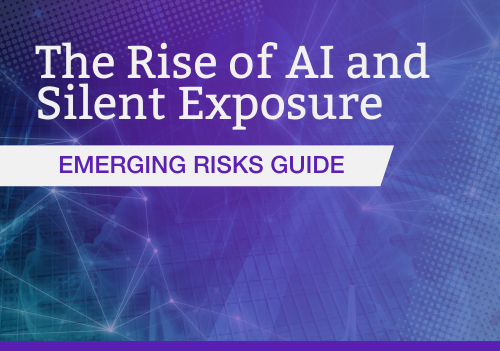Artificial Intelligence (AI) is on the rise, and with all the buzz on its threat to cybersecurity, it also offers plenty of cybersecurity benefits. The basics include improved accuracy and cost reduction. AI algorithms can scan networks for potential cyber threats, flag suspicious files or apps, and detect new variants of malware effectively, improving accuracy and reducing costs by omitting false positives, alert fatigue, and other limitations. Additionally, AI tools use task automation through algorithms so that analysts can focus on more complex work. This reduces workload and the use of human resources, in turn reducing costs. But this is only the tip of the iceberg. AI cybersecurity solutions can change the way the cyber industry implements practices. We’ve listed the top 5 benefits of using AI in cybersecurity solutions.
1. Real-Time Threat Detection Through Defensive Cyber AI
Time is of the essence when it comes to cybersecurity threats. Insureds must be able to respond to and handle threats ASAP in order to mitigate potential damages. Therefore, powering cybersecurity with AI offers more accurate threat detection in real-time by identifying patterns or suspicious activity. AI algorithms are trained to work with past data and notifications are triggered to warn of potential threats as they arise.
Furthermore, AI can enable cybersecurity to be managed at scale – especially in larger companies or in MSSPs. Oftentimes, these organizations hit a wall when it comes to managing large amounts of data or an influx of clients. But AI cybersecurity tools can digest large volumes of new and complex data, analyzing it to make underwriting much more accurate, and effective.
2. Mitigating Transaction Fraud with AI
AI cybersecurity solutions could soon become instrumental in combating Funds Transfer Fraud (FTF) detection.
FTF is often perpetuated through social engineering techniques such as Business Email Compromise (BEC), which was reported to cost almost 2.4 billion USD in 2021. Recently, this attack method has increased in popularity; Coalition reported in 2021 that 41% of BEC attacks evolved into an FTF incident resulting in direct loss of funds.
AI cybersecurity systems can monitor payment transactions in real-time and this allows them to detect any suspicious activity that could lead to fraud. Additionally, these AI tools can prevent account takeovers and identity spoofing through better identification capabilities in the account log-in process.
3. Using AI in Cybersecurity to Defend Against Ransomware
To help combat the resurgence of ransomware, AI can be utilized by defensive cyber tools to create multilayered security which entails data backup, employee education, and technical controls. AI tools will be used to identify and block any malicious traffic, pinpoint vulnerabilities in different technical systems, and provide analytics from diverse data systems captured in real-time in order to ward off any potential for ransomware attacks.
4.Better Zero-Trust Implementation and User Authentication with AI
A key benefit to using AI in cybersecurity is improved authentication methodologies and zero-trust models. Already common minimum requirements in cyber policy applications, underwriters may start taking additional AI capabilities into account when considering pricing, premiums and limitations.
These tools can provide personalized security and create smarter, more manageable systems for least privileged access. Furthermore, the system will analyze user behavior patterns by considering variables like location, time, and device type, and update security policies accordingly. In this way, the risk of unauthorized access is significantly reduced. Additionally, AI makes zero-trust models significantly easier to implement through automation, increasing the efficiency of the fulfillment of such frameworks.
5. Reinforcing Endpoint Protection with AI
AI can be utilized in defensive cybersecurity to secure endpoints by automating updates and patch installation. This can ensure more cohesive endpoint and patch management throughout an enterprise. Since Endpoint Detection and Response (EDR) is already a common minimum requirement, it is possible that underwriters may start to incorporate questions that delve into the AI capabilities of an insured’s EDR solution, with brownie points awarded to those with top-notch ML.
Cyber insurance professionals are expected to be able to advise insureds on emerging technologies and their impact on cyber risk. Therefore, true cyber insurance experts should be able to explain the cyber threats associated with AI as well as its benefits. Take note of these five use cases for AI in cybersecurity – not only does AI have the potential to protect against some of the most pressing attack vectors, threats and areas of vulnerability facing modern-day businesses, it is also likely that this technology will burgeon in popularity as it edges towards greater maturity.







